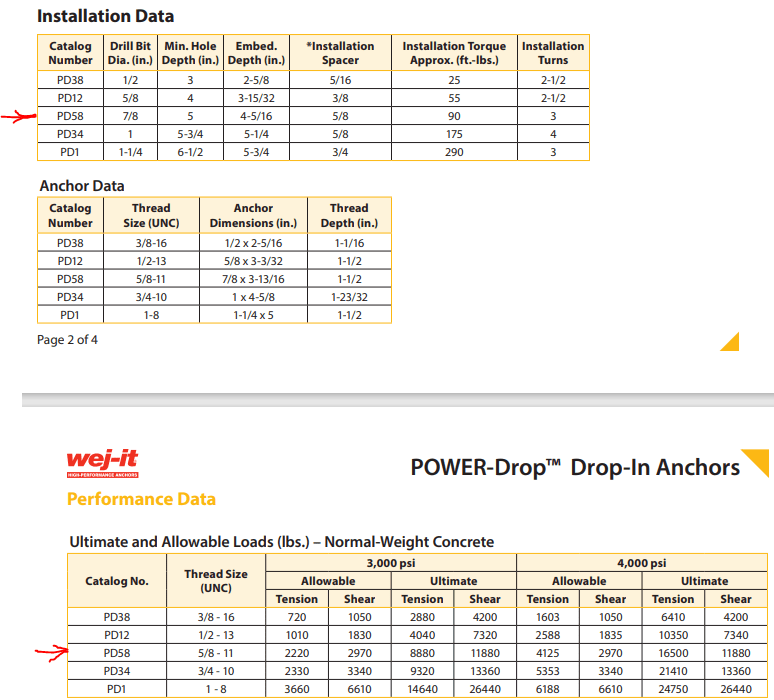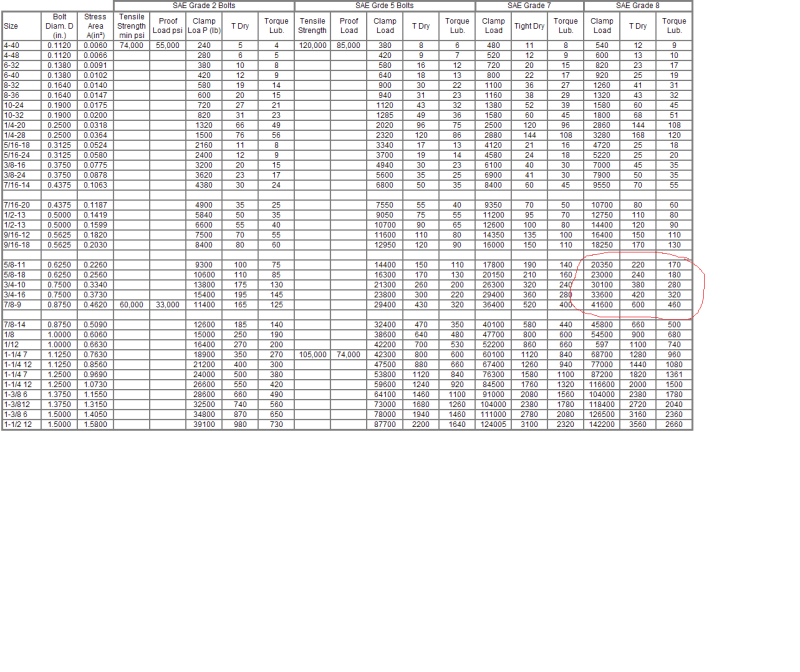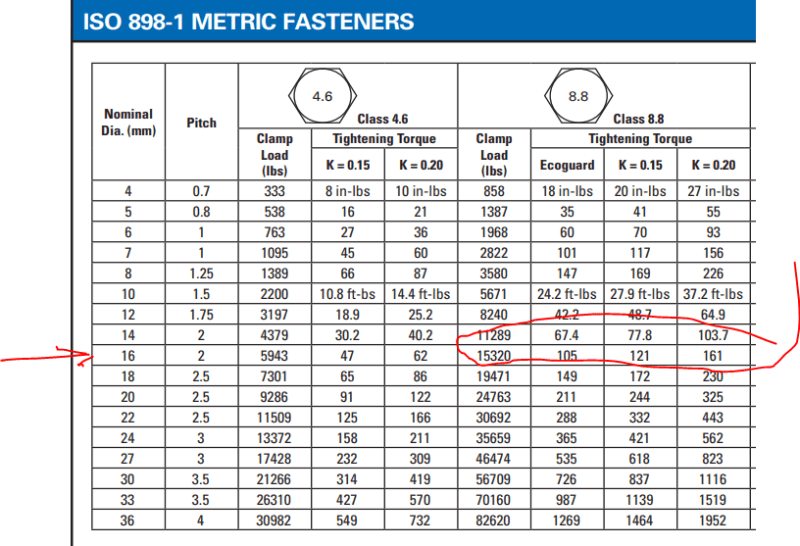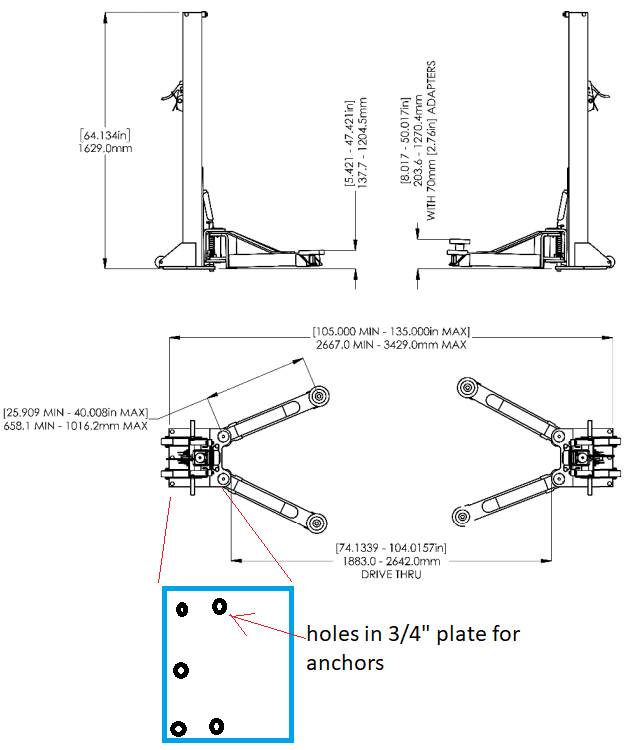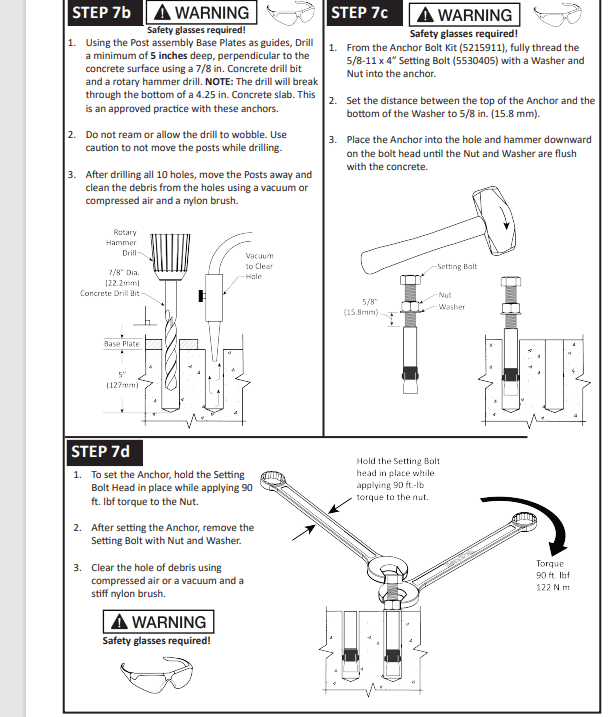HeavyG
Automotive
- Jul 18, 2023
- 6
Hi All.
Electrical engineer here, got mechanical question. The concrete wedge anchors i'm using for my car lift (M16) specify 90 flt-lbs installation torque; which is required to "set" the anchor into the concrete. Per specs., for my concrete psi, this provides approximately 4200 lbs clamping force/tension. My question is should i use the same 90 ft-lb torque to install my fasteners that bolt the plate to the concrete? Am i right in thinking that i wouldn't want to place torque tension on the anchor system beyond its clamp rating?
Seems like the ad hoc convention is, after setting the anchor, to use the same 90 ft-lbs to actually fasten the base plate. Seem like i wouldn't want to install the plate at the same torque as I used to set the anchor. Thx for any feedback.
Electrical engineer here, got mechanical question. The concrete wedge anchors i'm using for my car lift (M16) specify 90 flt-lbs installation torque; which is required to "set" the anchor into the concrete. Per specs., for my concrete psi, this provides approximately 4200 lbs clamping force/tension. My question is should i use the same 90 ft-lb torque to install my fasteners that bolt the plate to the concrete? Am i right in thinking that i wouldn't want to place torque tension on the anchor system beyond its clamp rating?
Seems like the ad hoc convention is, after setting the anchor, to use the same 90 ft-lbs to actually fasten the base plate. Seem like i wouldn't want to install the plate at the same torque as I used to set the anchor. Thx for any feedback.

